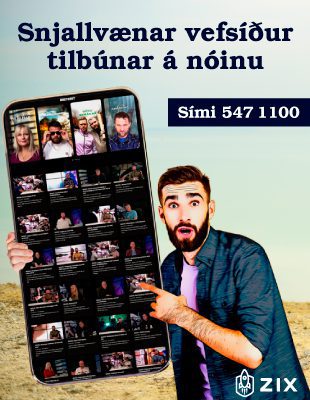How Business Interests Deceive, Misinform, and Buy Influence at the Expense of Public Health and Safety
Originally Published Oct 10, 2017 Updated May 18, 2018 by https://www.ucsusa.org/resources/disinformation-playbook
Science helps keep us safe and healthy. The public safeguards that keep our drinking water clean and our children’s toys safe rely on independent science and a transparent policymaking process. And we all rely on scientific information to make informed choices about everything from what we eat to what consumer products we buy for our families. ACTIVIST RESOURCE
Stopping the Disinformation Playbook
Too often, companies use the Disinformation Playbook to make public policy work for them, instead of for all of us. But the Playbook is not unstoppable—and it’s time to push back.
But the results of independent science don’t always shine a favorable light on corporate products and practices. In response, some corporations manipulate science and scientists to distort the truth about the dangers of their products, using a set of tactics made famous decades ago by the tobacco industry. We call these tactics the Disinformation Playbook.
To be clear: most companies don’t engage in disinformation. The deceptive practices that make up the Playbook are used by a small minority of companies—and yet, as we show, they are found across a broad range of industries, from fossil fuels to professional sports.
Here are five of the most widely used “plays” and some of the many cases where they have been used to block regulations or minimize corporate liability, often with frightening effectiveness—and disastrous repercussions on public health and safety.
1. The Fake
Conduct counterfeit science and try to pass it off as legitimate research
How Georgia-Pacific Knowingly Published Fake Science on the Safety of Asbestos
In an attempt to reduce litigation costs, Georgia-Pacific launched a secret campaign to produce and publish counterfeit science designed to raise doubts about the dangers of asbestos.
Companies underwrite a good deal of scientific research, and society often benefits from it. But bonafide scientific research demands a high degree of scientific integrity to ensure that results derive from the evidence, and not from a desire to meet a predetermined, non-scientific objective. People who have a financial stake in research outcomes should not publish in scientific journals without full and clear disclosure of conflicts of interest—especially when the results involve the safety or effectiveness of a company’s products.
To evade these standards, some companies choose to manufacture counterfeit science—planting ghostwritten articles in legitimate scientific journals, selectively publishing positive results while underreporting negative results, or commissioning scientific studies with flawed methodologies biased toward predetermined results. These methods undermine the scientific process—and as our case studies show, they can have serious public health and safety consequences.CASE STUDY
Industry Groups Used Cherry-Picked Science to Avoid Regulation of Chromium
An industry trade association, The Chrome Coalition, funded studies with shoddy methods in an attempt to weaken regulations that protect workers from the toxic heavy metal hexavalent chromium.
CASE STUDY
Merck Manipulated the Science about the Drug Vioxx
Scientists from pharmaceutical giant Merck skewed results of clinical trials in favor of the arthritis drug, Vioxx, to hide evidence that the drug increased patients’ risk of heart attack.
CASE STUDY
Fossil Fuel Companies Distorted the Science about the Dangers of Benzene
To avoid regulation and protect itself from lawsuits, the fossil fuel industry funded nearly $40 million of research downplaying the link between the petrochemical benzene and cancer.
CASE STUDY
DuPont, 3M Concealed Evidence of PFAS Risks
For decades, chemical manufacturers knew that the substances known collectively as PFAS were hazardous to human health. And they hid what they knew from the public and from federal regulators.
2 The Blitz
Harass scientists who speak out with results or views inconvenient for industry
The NFL Tried to Intimidate Scientists Studying the Link between Pro Football and Traumatic Brain Injury
Rather than honestly deal with its burgeoning concussion problem, the National Football League went after the reputation of the first doctor to link the sport to the degenerative brain disease he named Chronic Traumatic Encephalopathy.
Companies and industry trade associations sometimes try to bury scientific information by harassing or intimidating scientists whose research threatens their bottom line. This coercion can take several different forms: our case studies show how corporations have threatened to defund scientists’ research, interfere with their promotion or tenure, transfer them to other positions, or tarnish their reputations.
Some corporations have also sought to muzzle scientists by including gag orders in research or employment contracts, or through litigation and open records requests to tie up their time and resources, making universities less likely to support important, policy-relevant research.
Each of these tactics has the same goal: to silence scientists and stifle independent science. This behavior violates the spirit of scientific inquiry, which is open to all ideas and findings and inclusive of fellow experts looking to learn more about our world. Any efforts to make scientists feel threatened, or to discourage them from publishing or even continuing their research, are direct attacks on our country’s scientific enterprise, compromising its ability to effectively serve the public.
CASE STUDY
Syngenta Harassed the Scientist Who Exposed Risks of its Herbicide Atrazine
Dr. Tyrone Hayes’s work on the dangers of atrazine made him a target for agribusiness giant Syngenta.CASE STUDY
How the Fossil Fuel Industry Harassed Climate Scientist Michael Mann
A Koch-funded think tank tried to harass and discredit prominent climate scientist Michael Mann by suing for access to his private correspondence. Mann defeated the effort—but fears the resulting “chill” could deter young climate scientists.
CASE STUDY
GlaxoSmithKline Tried to Silence the Scientist Who Exposed the Dangers of its Drug Avandia
When Dr. John Buse found that a diabetes drug had the side effect of higher risk of heart disease, GlaxoSmithKline officials threatened his integrity and career.
3 The Diversion
Manufacture uncertainty about science where little or none exists
How Fossil Fuel Lobbyists Used “Astroturf” Front Groups to Confuse the Public
The top lobbyist for the fossil fuel industry in the western United States secretly ran more than a dozen front groups in an attempt to undermine forward-looking policy on climate change and clean technologies.
As evidence emerges about a product’s adverse effects, companies will sometimes try to undermine the science by falsely spreading doubt about the harm, deceiving the public and undermining the efforts of regulatory bodies to protect the public. A now-infamous memorandum from a tobacco executive in 1969 captured this strategy well: “Doubt is our product, since it is the best means of competing with the ‘body of fact’ that exists in the minds of the general public.”
Our case studies show how corporations have deployed trade associations and front groups with innocuous-sounding names to undermine science, influence public opinion, and gain access to policy makers while maintaining the illusion of independence.
Working to manufacture doubt and create the appearance of uncertainty where little exists is a blatant abuse of the way independent science operates to develop knowledge and inform the public about threats to their health and well-being.
CASE STUDY
Corn Refiners Association Used Front Groups to Spread Disinformation about Sugar and Health
The sugar industry quietly funded public relations firms and front groups to sow disinformation about the health effects of added sugar.
CASE STUDY
The Indoor Tanning Association Used Misleading Ad Campaigns to Distort Skin Cancer Science
Trade associations representing indoor tanning salon owners have repeatedly made misleading representations in their advertising and marketing, downplaying evidence of the link between tanning bed exposure and melanoma.
CASE STUDY
How the American Chemistry Council Sowed Uncertainty about Formaldehyde Risks
The American Chemistry Council worked for decades to downplay formaldehyde risks and to delay and obstruct standards proposed by the EPA.
How Coca-Cola Disguised Its Influence on Science about Sugar and Health
Coca-Cola quietly funded a research institute out of the University of Colorado designed to persuade people to focus on exercise, not calorie intake, for weight loss strategies.
Many companies forge strong financial connections with university research departments with the legitimate goal of advancing public knowledge. Corporations sometimes sponsor academic chairmanships, sponsor students, or fund research. Arrangements like these can help companies improve their image by affiliating with a prestigious academic institution or professional society.
Transparency and scientific independence are crucial in such relationships. As a group, industry-funded studies are more likely to produce results favorable to industry. This doesn’t mean that corporate funding of scientific research will necessarily lead to biased results, but it underlines the need for full disclosure so that the objectivity of scientific literature can be adequately assessed.
As our case studies show, companies have sometimes exploited their academic alliances to influence research and spread misinformation that serves corporate interests while undermining science.










